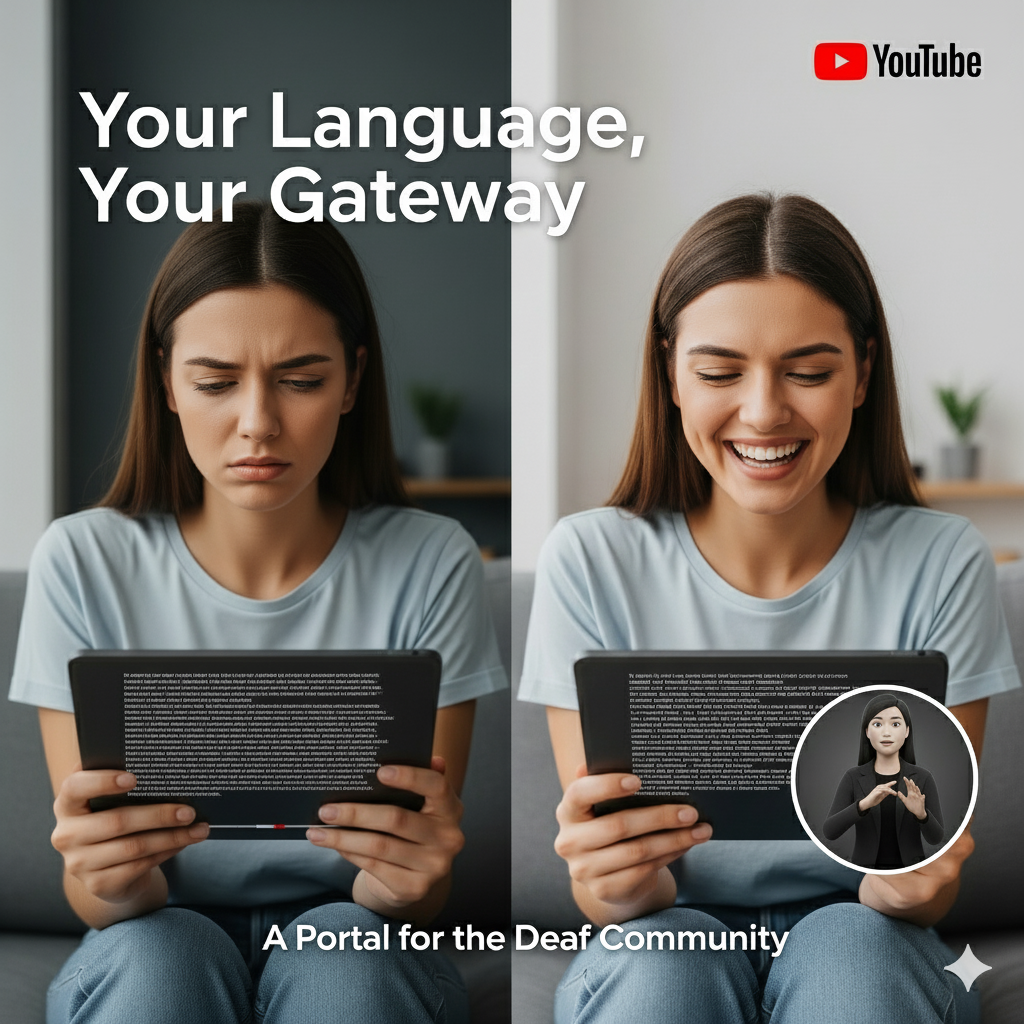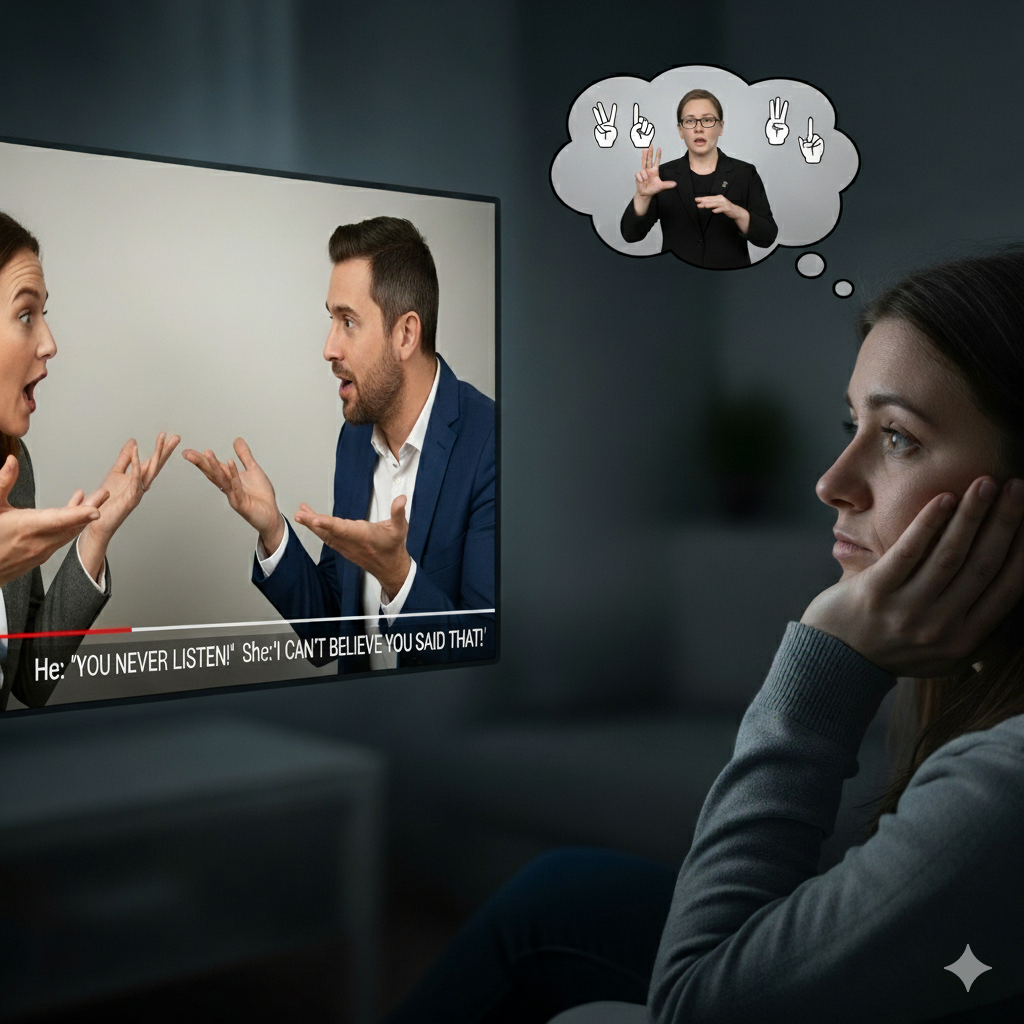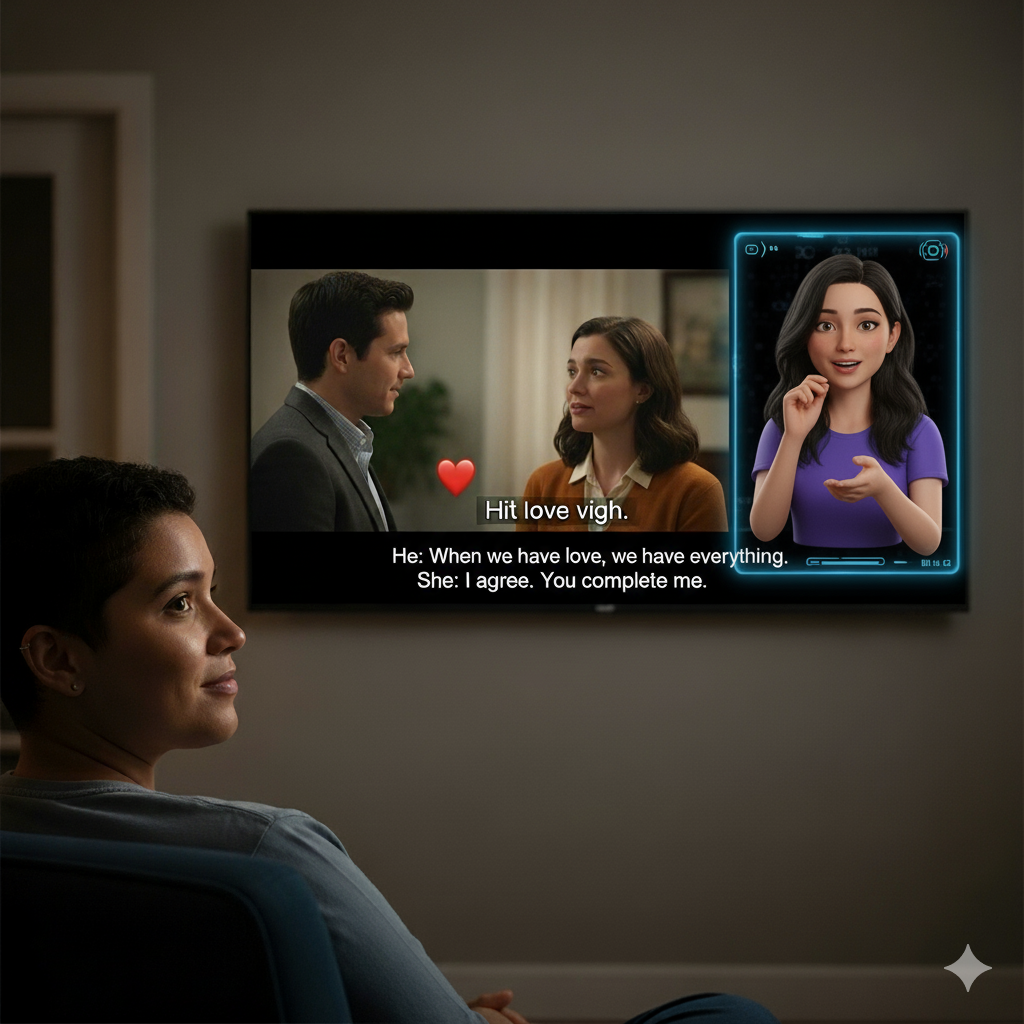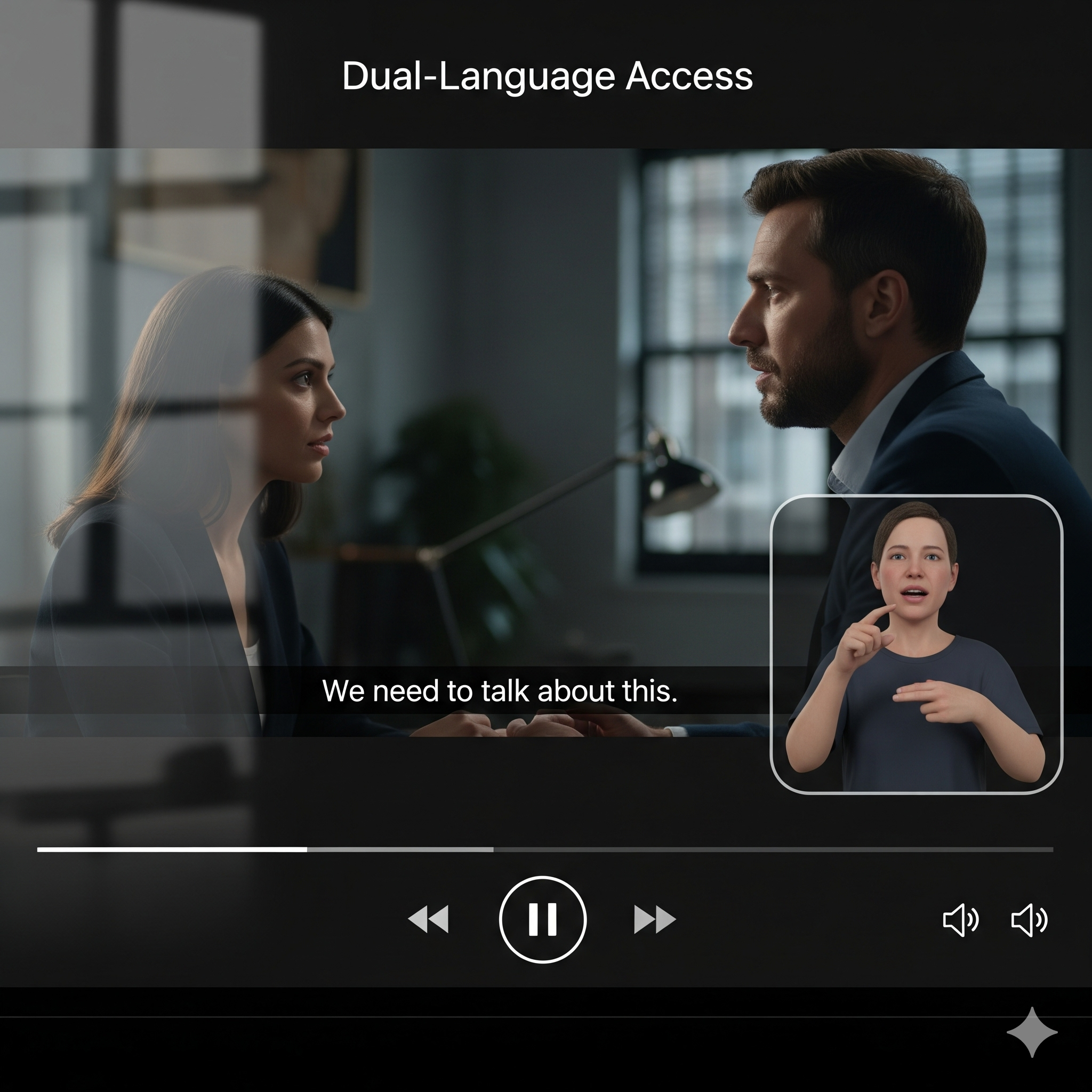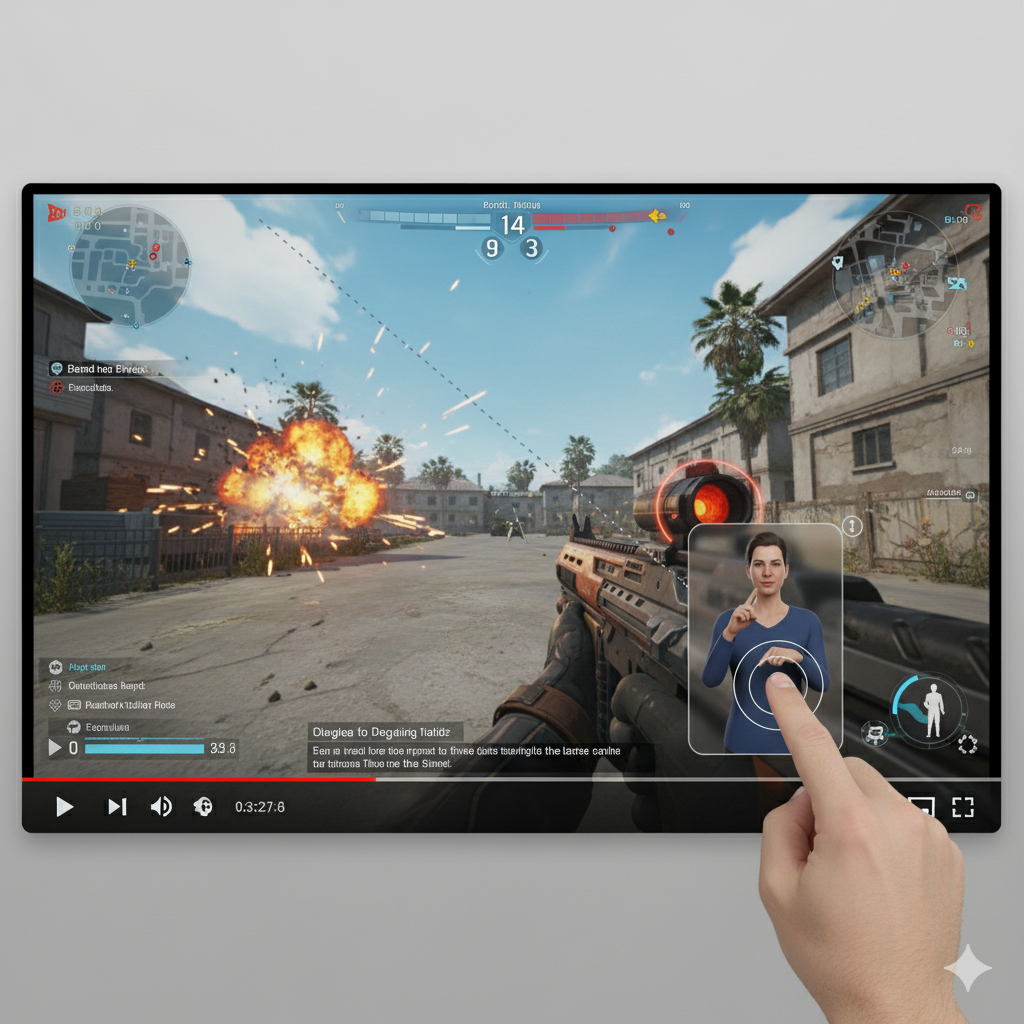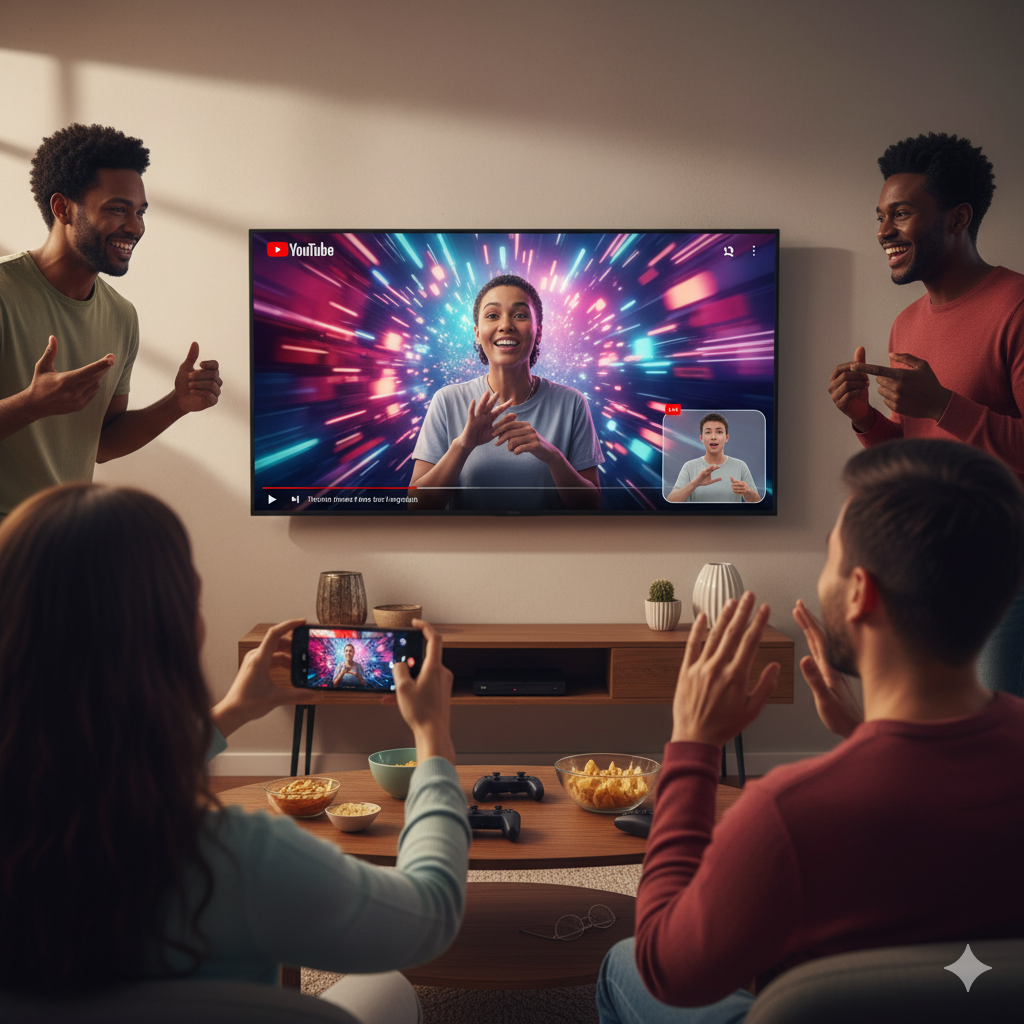YouTube: The AI Sign Language Interpreter
Concept Design – Mockup
Every story, signed for you.
Tired of reading a story? It’s time to feel it.
Now you can experience every video in your own language—with all the emotion, rhythm, and nuance intact. YouTube’s AI Sign Language Interpreter delivers real-time signing, customized to your language, your tone, and your comfort. Move the avatar anywhere on screen, and immerse yourself fully—because your world deserves to speak your language.
The Origin of the Project: A Language of One's Own
This idea began while watching a documentary featuring a Deaf interviewer. He described sign language as his native tongue. That moment shifted something in me. I realized that for many Deaf individuals, subtitles aren’t their language—they’re just a bridge. Sign language is their true voice, the language of over 70 million people worldwide.
As someone who spends a lot of time on YouTube, I started to see the platform through this new lens. For Deaf users, it must feel like flipping through a picture book missing half the words. Subtitles aren’t always available, and even when they are, they demand constant reading. You can follow the story, but not the tone, the rhythm, or the laughter. It’s like watching a foreign film—you understand the plot, but not the soul.
That gap felt too wide to ignore. I began to wonder—what if YouTube could move beyond subtitles and bring sign language itself into the screen? That question became the seed of this project.
Your Language, Your Gateway
The digital world often calls itself inclusive—but for the Deaf community, that promise is still incomplete. Subtitles assume that spoken language is primary, yet for millions, sign language is home. Watching with captions alone can feel emotionally flat, stripped of expression and rhythm.
A report from the National Captioning Institute highlights how subtitles fail to capture key non-verbal and emotional cues. Without them, Deaf viewers are excluded from the shared joy of laughter or the quiet stillness of a touching moment. True accessibility is not about understanding words—it’s about feeling belonging.
Insight — Inclusion Means Feeling, Not Just Understanding
Accessibility goes beyond providing information; it’s about honoring identity and emotion.
A European Union of the Deaf report calls for deeper integration of sign language into media, recognizing its cultural significance.
By introducing an AI interpreter avatar that expresses emotion, tone, and gesture, YouTube can shift from offering “subtitles for understanding” to offering sign language for immersion.
It’s not just about comprehension—it’s about connection.
Solution — AI Interpreter Mode 🤖
A built-in feature that brings sign language into every video, directly within YouTube.
🎬 Subtitle Integration
Just like selecting a language, click CC → “Sign Language (auto-generated).”
🧏 AI Interpreter Avatar
Choose ASL, KSL, or any other sign language. A lifelike avatar appears instantly, translating spoken content in real time.
🪟 Free Placement & Customization
Move or resize the avatar anywhere on screen. Personalize it—choose the gender, ethnicity, hairstyle, or outfit that feels familiar and comfortable.
💬 Dual-Language Access
Use both sign language and subtitles together for layered understanding.
🎭 Emotional Expression
The avatar mirrors tone through facial expression and gesture. A joke is signed with a smile and rhythm; a heartfelt moment with soft, calm hands. Viewers don’t just see the meaning—they feel it.
🎨 Contextual Style Adaptation
The avatar adapts its style to match each video’s tone. News? Clear, formal delivery. Music videos? Expressive, rhythmic signing. Educational content? Slow, detailed articulation. This gives Deaf audiences the same contextual cues that hearing viewers receive naturally.
Impact
For the User
Video becomes an emotional, fully immersive experience—not a reading task. Deaf users can laugh, cry, and engage deeply, capturing both meaning and mood without fatigue. For a population expected to surpass 700 million with hearing loss by 2050, this means more than access—it means equality.
For the Community
Shared laughter, shared silence, shared experience. By feeling stories together, the Deaf community gains visibility and belonging, bridging gaps that subtitles could never cross.
For the Brand
This positions YouTube as the world’s most inclusive storytelling platform—one that doesn’t just translate sound, but translates humanity.
It’s more than accessibility—it’s empathy through design, and innovation with heart.
—
Speculative UX Concept by Jin Kim
Visual mockups generated with Gemini & ChatGPT (for concept purposes only)
